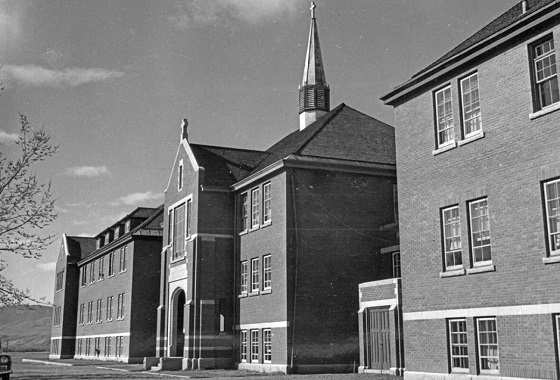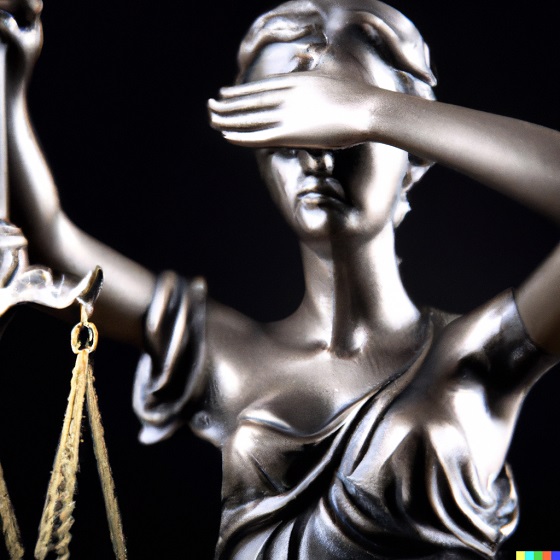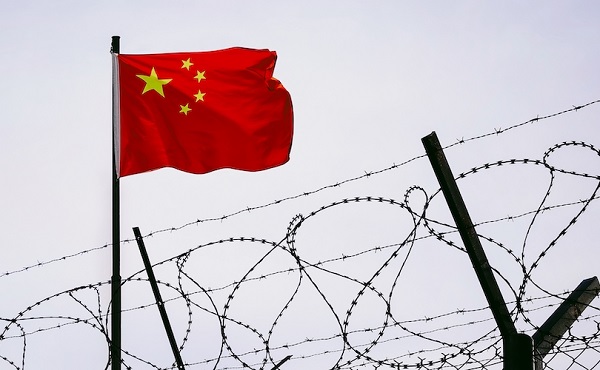Frontier Centre for Public Policy
Let’s get the facts on the graves, with a public inquiry

From the Frontier Centre for Public Policy
Canada needs a public inquiry into what has become known as “The Kamloops Graves Hoax”.
The May 27, 2021 claim of the Kamloops Indian band was that “human remains” were found in the apple orchard area of the former Kamloops Indian Residential School, resulting in what has been described both as a “national hysteria” and a “moral panic”. The band subsequently extended the claim to include other even more graphic terms, such as “bodies”, “graves” and even “mass graves”. Emotional articles and books followed.
In a press release issued three years after those sensational claims were made, their chief, Roseanne Casimir, has finally admitted the truth – there were no “human remains”, “bodies” “graves” or “mass graves” found at Kamloops.
Only “soil anomalies” were detected. Those anomalies could just as easily be tree roots, rocks, or the result of any of the other previous excavations that had been done in that same area. (As it happens there was a previous excavation in the area that was apparently missed by the radar operator. It is almost certain that it was soil anomalies from a 1924 excavation that her radar detected.)
Those 2021 false claims sent the nation into a panic. There is no need to describe in detail the flag-lowering, church-burning shock and frenzy that spread like wildfire through national and international media, brought the ailing Pope to Canada, convinced shamed MPs to condemn their own country as genocidal, vote in regressive UNDRIP and other incredibly expensive legislation, and spend what will be billions of dollars on a futile search for “missing children” who never existed. Many fine writers, including Terry Glavin, have described these strange last three years.
That episode of national hysteria is now an embarrassing part of Canada’s history.
A legitimate question to ask is why the Kamloops band made those false claims.
Chief Casimir said that they were based on Sarah Beaulieu’s report.
“But it would be shockingly unprofessional for a ground penetrating radar operator (GPR) to claim that graves had been found before excavation had taken place. It is well known that GPR can detect only soil anomalies or disturbances. It cannot detect “graves” or “human remains”. A simple Google search of the question “Can ground penetrating radar detect graves?” is all that is necessary to find that answer.
It therefore seems highly unlikely that Beaulieu would have made such a reckless claim. Almost certainly, Beaulieu properly reported only that soil disturbances, anomalies or reflections – that might be graves — were detected, and that excavation would be necessary to determine whether or not those disturbances were graves, or any of the hundreds of other possibilities.
But the answer to precisely what Beaulieu said can only be found by reading her report. And that is currently impossible, because the band is refusing to release the report. This is odd, because they had initially promised to release it, and only later reneged on that promise. They are are now steadfastly refusing to let the public see it.
The only reasonable explanation for this refusal is that they have something to hide – specifically that their claim of “graves” found was a claim they knew was false when they made it. Beaulieu’s report almost certainly did not say that graves had been found.
But on the strength of what appears to be a lie they made an application to the federal government for money to deal with what they said were “graves” containing the remains of 215 KIRS students – students they insisted had died under sinister circumstances, and were secretly buried by persons unknown, with the forced help of children – “as young as six”.
Exactly what representations the band made to the federal government in order to get the $8,000,000, or how the money was spent, is unknown, for the simple reason that both the band and the federal government have not released that information to the public.
Logic dictates that either Sarah Beaulieu, or Chief Roseanne Casimir, claimed that “graves” had been found, knowing that such information was false. Only one of them was telling the truth. $8,000,000 was obtained from the federal government on false information. Who made that false “grave” claim?
The Kamloops band refuses to release Beaulieu’s report – a report they initially promised to release. They are also refusing to provide any details about how the $8,000,000 was spent – despite not having put even one shovel in the ground. The RCMP is refusing to investigate anything involving the Kamloops claim, unless the Kamloops band requests their assistance. It is not likely that the band will ask the RCMP to investigate their own false claim. The federal government is refusing to release any details about the representations made by the band in order to obtain the $8,000,000.
And now, three years after that claim of “human remains” the Kamloops band has suddenly changed “remains” to exactly what they always were “anomalies”. They refuse to provide an explanation for that astounding reversal.
Meanwhile, there is absolutely no explanation from the Trudeau government about why they gave out millions of dollars of taxpayers’ money, and severely damaged Canada’s reputation at home and abroad, with a preposterous genocide confession, for allegations about secret graves that a simple Google search would have told them were false. There is also no explanation for the mainstream media’s failure to do that simple Google search, or ask even one obvious question about claims that were so highly improbable from the outset.
Hamlet’s “Something is rotten in the state of Denmark” quote is apt here.
Except the smell is coming straight from Kamloops and Ottawa.
Most Canadians now believe at least some version of the original claim that priests secretly buried indigenous children at Kamloops. One in five believe that priests actually murdered the children.
Life in Canada has been severely disrupted by the false claims made on May 27, 2021. Canada’s reputation has been badly damaged. Canadian schoolchildren are being falsely taught that their ancestors were genocidal racists.
We have now reached the absurd point where a Justice Minister of Canada has seriously considered criminalizing anyone asking legitimate questions about these secret burial claims, Canada’s Senate has recommended that even writing an article disputing the original May 27, 2021 Kamloops claim should be outlawed – apparently making not only this article – but even Casimir’s recent correction to “anomalies” illegal. This madness must end. Canadians deserve to know how things went so horribly wrong.
A public inquiry is the only way to clear the air, and get the country back on track.
Brian Giesbrecht, retired judge, is a senior fellow at the Frontier Centre for Public Policy.
Agriculture
The Climate Argument Against Livestock Doesn’t Add Up

From the Frontier Centre for Public Policy
Livestock contribute far less to emissions than activists claim, and eliminating them would weaken nutrition, resilience and food security
The war on livestock pushed by Net Zero ideologues is not environmental science; it’s a dangerous, misguided campaign that threatens global food security.
The priests of Net Zero 2050 have declared war on the cow, the pig and the chicken. From glass towers in London, Brussels and Ottawa, they argue that cutting animal protein, shrinking herds and pushing people toward lentils and lab-grown alternatives will save the climate from a steer’s burp.
This is not science. It is an urban belief that billions of people can be pushed toward a diet promoted by some policymakers who have never worked a field or heard a rooster at dawn. Eliminating or sharply reducing livestock would destabilize food systems and increase global hunger. In Canada, livestock account for about three per cent of total greenhouse gas emissions, according to Environment and Climate Change Canada.
Activists speak as if livestock suddenly appeared in the last century, belching fossil carbon into the air. In reality, the relationship between humans and the animals we raise is older than agriculture. It is part of how our species developed.
Two million years ago, early humans ate meat and marrow, mastered fire and developed larger brains. The expensive-tissue hypothesis, a theory that explains how early humans traded gut size for brain growth, is not ideology; it is basic anthropology. Animal fat and protein helped build the human brain and the societies that followed.
Domestication deepened that relationship. When humans raised cattle, sheep, pigs and chickens, we created a long partnership that shaped both species. Wolves became dogs. Aurochs, the wild ancestors of modern cattle, became domesticated animals. Junglefowl became chickens that could lay eggs reliably. These animals lived with us because it increased their chances of survival.
In return, they received protection, veterinary care and steady food during drought and winter. More than 70,000 Canadian farms raise cattle, hogs, poultry or sheep, supporting hundreds of thousands of jobs across the supply chain.
Livestock also protected people from climate extremes. When crops failed, grasslands still produced forage, and herds converted that into food. During the Little Ice Age, millions in Europe starved because grain crops collapsed. Pastoral communities, which lived from herding livestock rather than crops, survived because their herds could still graze. Removing livestock would offer little climate benefit, yet it would eliminate one of humanity’s most reliable protections against environmental shocks.
Today, a Maasai child in Kenya or northern Tanzania drinking milk from a cow grazing on dry land has a steadier food source than a vegan in a Berlin apartment relying on global shipping. Modern genetics and nutrition have pushed this relationship further. For the first time, the poorest billion people have access to complete protein and key nutrients such as iron, zinc, B12 and retinol, a form of vitamin A, that plants cannot supply without industrial processing or fortification. Canada also imports significant volumes of soy-based and other plant-protein products, making many urban vegan diets more dependent on long-distance supply chains than people assume. The war on livestock is not a war on carbon; it is a war on the most successful anti-poverty tool ever created.
And what about the animals? Remove humans tomorrow and most commercial chickens would die of exposure, merino sheep would overheat under their own wool and dairy cattle would suffer from untreated mastitis (a bacterial infection of the udder). These species are fully domesticated. Without us, they would disappear.
Net Zero 2050 is a climate target adopted by federal and provincial governments, but debates continue over whether it requires reducing livestock herds or simply improving farm practices. Net Zero advocates look at a pasture and see methane. Farmers see land producing food from nothing more than sunlight, rain and grass.
So the question is not technical. It is about how we see ourselves. Does the Net Zero vision treat humans as part of the natural world, or as a threat that must be contained by forcing diets and erasing long-standing food systems? Eliminating livestock sends the message that human presence itself is an environmental problem, not a participant in a functioning ecosystem.
The cow is not the enemy of the planet. Pasture is not a problem to fix. It is a solution our ancestors discovered long before anyone used the word “sustainable.” We abandon it at our peril and at theirs.
Dr. Joseph Fournier is a senior fellow at the Frontier Centre for Public Policy. An accomplished scientist and former energy executive, he holds graduate training in chemical physics and has written more than 100 articles on energy, environment and climate science.
Frontier Centre for Public Policy
Canada Lets Child-Porn Offenders Off Easy While Targeting Bible Believers

From the Fr0ntier Centre for Public Policy
By Lee Harding
Judges struck down one-year minimum prison sentences for child pornography possession. Meanwhile, the chair of the Parliamentary Human Rights Committee publicly stated that religious scriptures condemning homosexuality are “hateful.” Lee Harding says the 1982 Charter has led to an inversion of Canadian values.
Light sentences for child-porn possession collide with federal signals that biblical texts could be prosecuted as hate
Was Canada’s 1982 Charter meant to condemn the Bible as hate literature or to weaken sentencing for child pornography? Like it or not, that is the direction post-Charter Canada is moving.
For Halloween, the black-robed justices at the Supreme Court of Canada ruled that a one-year mandatory sentence for accessing or possessing child sexual abuse materials amounted to “cruel and unusual punishment.” The judgment upheld a similar ruling from the Quebec Court of Appeal.
A narrow 5-4 majority leaned on a hypothetical. If an 18-year-old received a sexually explicit image from a 17-year-old girlfriend, that image would technically be child porn. If prosecuted, the recipient could face a one-year minimum sentence. On that basis, the judges rejected the entire minimum sentence law.
But the real case before them was far more disturbing. Two Quebec men possessed images and videos that were clearly the result of abuse. One had 317 unique images of child porn, with 90 per cent showing girls aged three to six years old forced into penetration and sodomy by adults or other minors. The other had 531 images and 274 videos of girls aged five to 10 engaged in sexual acts, including anal and vaginal penetration and, in some cases, multiple children.
The sentences were light. The first offender received 90 days of intermittent imprisonment, served concurrently, plus 24 months of probation. The second received nine months of imprisonment and the same probation period. How is this acceptable?
The judgment did not emerge without warning. Daniel A. Lang, a Liberal campaign chair appointed to the Senate by Lester B. Pearson, saw this coming more than 40 years ago. On April 23, 1981, he expressed concerns that the new Constitution could be used to erode basic decency laws. He pointed to the U.S. experience and predicted that Canada could face a wave of cases challenging laws on “obscenity, pornography and freedom of speech,” leading to the “negation of federal or provincial legislation.”
His warning has come true. If Parliament wants to restore mandatory minimum sentences, it can do so by passing a new law that removes the obscure scenario judges used to strike them down. Section 33, the notwithstanding clause, gives elected officials the power to override court rulings for up to five years at a time.
This reflects Canada’s own system. In the British tradition Canada inherited, Parliament—not the courts—is the ultimate authority. British common law developed over centuries through conventions and precedents shaped by elected lawmakers. Section 33 protects that balance by ensuring Parliament can still act when judges disagree.
There is a democratic check as well. If a government uses Section 33 and voters believe it made the wrong call, they can remove that government at the next election. A new government can then follow the judges’ views or let the old law expire after five years. That accountability is precisely why Section 33 strengthens democracy rather than weakening it.
Yet today, Ottawa is working to limit that safeguard. In September, the Carney Liberals asked the Supreme Court to rule on new limits to how legislatures can use Section 33. Five premiers wrote to Carney to oppose the move. Former Newfoundland and Labrador premier Brian Peckford, the last living signatory to the agreement that produced the 1982 Constitution Act, has also condemned the attempt as wrongful.
The judges will likely approve the new limits. Why would they refuse a chance to narrow the one tool elected governments have to get around their rulings? For decades, the Supreme Court has made a habit of striking down laws, telling Parliament it is wrong and forcing political change.
And while minimum sentences for child-porn offenders fall, the Carney cabinet is focused on something else entirely: prosecuting Bible believers for alleged hate.
The quiet part was said out loud by Montreal lawyer Marc Miller, former minister of immigration and citizenship and chair of the Parliamentary Human Rights Committee. On Oct. 30, he told the committee, “In Leviticus, Deuteronomy, Romans, there’s other passages, there’s clear hatred towards, for example, homosexuals.”
The former minister added, “There should perhaps be discretion for prosecutors to press charges … [T]here are clearly passages in religious texts that are clearly hateful.”
That is the former minister’s view. Instead of Bible thumpers, we now have Charter thumpers who use their “sacred” document to justify whatever interpretation suits their cause and wield it against their ideological opponents. When wokeness hardens into dogma, disagreement becomes heresy. And we know what happens to heretics.
A country that lets child-porn offenders off easy while it hunts down Bible believers for fines and possible prison has lost its way. Most Canadians would reject this trade-off, but their rulers do not, whether in cabinet or on the judges’ bench. A dark shadow is settling over the country.
Lee Harding is a research fellow for the Frontier Centre for Public Policy
-

 International1 day ago
International1 day agoGeorgia county admits illegally certifying 315k ballots in 2020 presidential election
-

 Digital ID2 days ago
Digital ID2 days agoCanadian government launches trial version of digital ID for certain licenses, permits
-

 International1 day ago
International1 day agoCommunist China arrests hundreds of Christians just days before Christmas
-

 Business2 days ago
Business2 days agoThe “Disruptor-in-Chief” places Canada in the crosshairs
-

 Business20 hours ago
Business20 hours agoSome Of The Wackiest Things Featured In Rand Paul’s New Report Alleging $1,639,135,969,608 In Gov’t Waste
-

 Alberta1 day ago
Alberta1 day agoCalgary’s new city council votes to ban foreign flags at government buildings
-

 Business1 day ago
Business1 day agoWarning Canada: China’s Economic Miracle Was Built on Mass Displacement
-

 Energy10 hours ago
Energy10 hours agoThe Top News Stories That Shaped Canadian Energy in 2025 and Will Continue to Shape Canadian Energy in 2026



